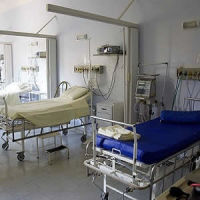Providing timely and quality patient care is what doctors are trained to do. In today's healthcare environment, however, there are a number of factors that distract physicians from their focus on delivering direct patient care. In particular, administrative burdens and technological frustrations are putting more pressure on U.S. physicians to reduce clinical work hours or leave the profession, according to a study published in the new issue of Mayo Clinic Proceedings.
The study, conducted by experts at the American Medical Association, Mayo Clinic and Stanford University, finds that roughly one in five physicians intend to reduce clinical work hours in the next 12 months. In addition, about one in 50 physicians have expressed their intention to leave medicine for a different career entirely in the next two years.
The AMA report highlights an association between the career plans of physicians and the growing problem of burnout, technological dissatisfaction and administrative fatigue among providers. For instance, physicians who were burned out, dissatisfied with work-life integration, and dissatisfied with electronic health records were more likely to intend to reduce clinical work in the next 12 months.
The study findings also show that burnout is the largest factor influencing physicians who intend to leave the medical profession in the next two years. As the study's authors explain, mounting obstacles to patients’ care have been contributing to doctor's emotional fatigue and loss of enthusiasm and may foreshadow a crisis in the American healthcare system. If just 30 percent of physicians follow through on their intention to leave medicine in the next two years, the study estimates approximately 4,759 physicians would leave the workforce -- a loss roughly equivalent to eliminating the graduating classes of 19 U.S. medical schools in each of the next two years.
“Our findings have profound implications for healthcare organisations,” the authors note. “Replacing physicians is costly to institutions, with one recent analysis suggesting costs of $800,000 or more per physician. In addition, turnover is disruptive to patients, staff and organisational culture.”
To help physicians succeed in their life's work of caring for patients, the AMA has made the prevention of burnout a core priority. The group, together with partners in the healthcare sector, is leading a change in medicine that embraces physician well-being as a critical factor in the long-term clinical and economic success of the nation’s healthcare system.
Through the "STEPS Forward" platform, AMA provides physicians with relevant tools and information to help them reduce sources of work-related stress and prevent burnout. There are free online modules designed to help physicians and health leaders learn their risk factors for burnout, and adopt medical practice solutions to reignite professional fulfilment and resilience. The modules include Creating the Organisational Foundation for Joy in Medicine, Implementing Team-Based Care, Team Documentation, and EHR In-Basket Restructuring for Improved Efficiency.
Source: Healthcare IT News
Image Credit: Pixabay
Latest Articles
patient care, administrative burdens, EHR burnout, technological frustrations
Providing timely and quality patient care is what doctors are trained to do. In today's healthcare environment, however, there are a number of factors that distract physicians from their focus on delivering direct patient care. In particular, administrati



























